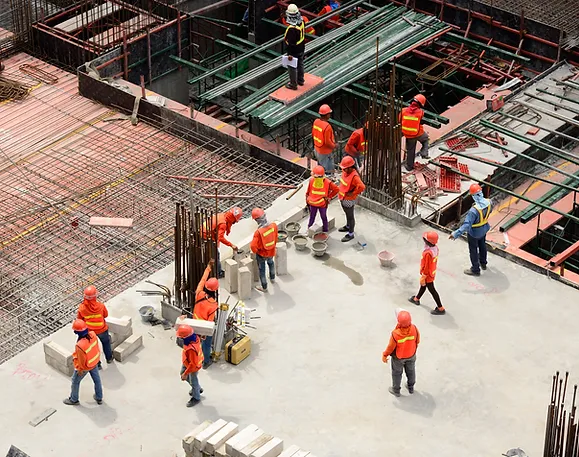Employees in the construction industry have a high risk of falls because they are exposed to many hazards during building construction. The hazards are compounded when there are many contractors working on a project.
The Leading Cause of Fatalities in the Construction Industry
The leading cause of fatalities in the construction industry is falls. Since 1995, more than 300 fall-related deaths have occurred each year, or approximately one third of all construction deaths. The sad part of the story is that most of these deaths could have been prevented.
How do these accidents occur?
Employees in the construction industry have a high risk of falls because they are exposed to many hazards during building construction. The hazards are compounded when there are many contractors working on a project. One contractor may create a hazard and employees of other contractors on the site may also be exposed to that hazard.
Hazardous conditions that may result in fatal falls include
- Improperly constructed scaffolds
- Leading edges of steel deck construction
- Improperly used fall arrest systems
- Holes in floors and working surfaces
- Open edges on floors
- Roofing operations
- Open elevator shafts
- Skylights
How can these hazards be controlled?
There are two primary methods of reducing fall-related injuries: fall prevention and fall arrest systems.
Fall prevention means that the worker is protected from falling by some means that keeps the worker away from the hazardous area. Fall prevention systems must be used to prevent a fall of six feet or more. Examples are guardrails and mid-rails on scaffolds and the open edges of floors, guardrails around skylights, guardrails on scissors lifts, covers over floor openings, and restricted zones in roofing operations. These types of protective devices have specific design requirements per OSHA’s construction standards. For example, guardrails must be between 39 and 45 inches above the walking and working surface, and must be able to withstand a force of more than 200 pounds. The mid-rail must be halfway between the floor and the top rail and be able to withstand a force of 150 pounds. Covers over floor holes must withstand twice the expected weight of the personnel and equipment that may pass over the cover. The hole cover should be marked with the word “HOLE.”
Fall arrest systems are full-body harnesses attached by a lanyard to an anchor point that prevent a worker from free-falling more than six feet, or safety nets that catch a worker after a fall of no more than 30 feet. The fall arrest systems have specific design requirements. The fall arrest system must have a maximum decelerating force of 1,800 pounds, and must bring a worker to a complete stop within 3.5 feet. Anchorage points must be able to withstand a force of 5,000 pounds. Guardrails or scaffold components should not be used as anchorage points.
Training
Training is an important component of an effective fall protection program. Employees must know how to use the systems correctly, how to inspect the equipment, and the limitations of fall prevention and fall arrest systems.
Contact us today if you have had an accidental fall.

Recent Comments